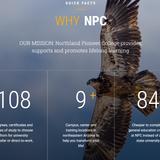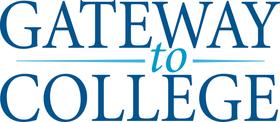- Founded in 1968, the University of New Mexico-Gallup is a branch campus of the University of New Mexico and operates as a community college. It serves the approximately 75,000 residents of the region, which includes Gallup and McKinley County, and is the largest of the four UNM branch campuses.
School Highlights
University of New Mexico-Gallup Campus serves 2,841 students (24% of students are full-time).
The college's student-teacher ratio of 18:1 is higher than the state community college average of 16:1.
Minority enrollment is 88% of the student body (majority American), which is more than the state average of 74%.
Quick Facts (2025-26)
- Enrollment: 2,841 students
- In-state tuition: $1,704
- Out-state tuition: $4,104
- Acceptance Rate: 94%
- Student-teacher ratio: 18:1
- Minority enrollment: 88%
- Source: Integrated Postsecondary Education Data System (IPEDS)
Top Rankings
University of New Mexico-Gallup Campus ranks among the top 20% of public schools in New Mexico for:
Category
Attribute
School Overview
The teacher population of 160 teachers has stayed relatively flat over five years.
University of New Mexico-Gallup Campus
(NM) Community College Avg.
Carnegie Classification
Associate's Colleges: High Career & Technical-Mixed Traditional/Nontraditional
Associate's Colleges: Mixed Transfer/Career & Technical-High Nontraditional
Institution Level
At least 2 but less than 4 years
At least 2 but less than 4 years
Institution Control
Public
Public
Total Faculty
160 staff
111 staff
School Calendar
Student Body
The student population of University of New Mexico-Gallup Campus has grown by 14% over five years.
The student-teacher ratio of 18:1 has increased from 14:1 over five years.
The University of New Mexico-Gallup Campus diversity score of 0.65 is less than the state average of 0.67. The school's diversity has grown by 14% over five years.
Total Enrollment
2,841 students
2,145 students
Student-Teacher Ratio
18:1
16:1
# Full-Time Students
674 students
371 students
# Part-Time Students
2,167 students
1,774 students
# Enrollment Undergraduate
284 students
284 students
# Full-Time Undergraduate Students
674 students
490 students
# Full-Time Graduate Students
n/a
146 students
# Part-Time Undergraduate Students
2,167 students
1,774 students
# Part-Time Graduate Students
n/a
128 students
Total Dormitory Capacity
n/a
258 students
% American Indian/Alaskan
51%
10%
% Asian
3%
2%
% Hispanic
27%
50%
% Black
1%
3%
% White
12%
26%
% Hawaiian
n/a
n/a
% Two or more races
2%
3%
% Non Resident races
1%
1%
% Unknown races
2%
5%
Diversity Score
0.65
0.67
College Completion Rate (Students who graduate in less than 4 years)
16%
25%
College Completion Rate (Students who graduate in 4 years or more than 4 years)
n/a
40%
Average Graduate Earnings (10 Years)
$42,000
$36,300
Tuition and Acceptance Rate
The public in-state tuition of $1,704 is less than the state average of $2,058. The in-state tuition has declined by 16% over four years.
The public out-state tuition of $4,104 is less than the state average of $4,570. The out-state tuition has declined by 14% over four years.
In-State Tuition Fees
$1,704
$2,058
Out-State Tuition Fees
$4,104
$4,570
Tuition Notes
$966.00 for 12-18 credits (resident)
% Students Receiving Some Financial Aid
91%
91%
Median Debt for Graduates
$18,500
$13,236
Median Debt for Dropouts
$9,500
$6,125
Acceptance Rate
94%
100%
SAT Reading
n/a
485
SAT Math
n/a
505
SAT Writing
n/a
455
ACT Composite
n/a
20
ACT English
n/a
19
ACT Math
n/a
21
Source: 2024 (or latest year available) Integrated Postsecondary Education Data System (IPEDS)
School Notes
- School Mascot: Lobo
- Our campus is located on 64 acres in New Mexico's breathtaking High Desert Country. The college also includes the 25,000-square-foot Zuni South Campus, a 2500-square-foot facility on Gallup's North Side, as well as other learning sites at Ramah, Navajo and Smith Lake. Today, we are a comprehensive vocational and transfer institution that offers Certificates in 27 disciplines and Associate's Degrees in 36 programs. We also offer Bachelor's Degrees from UNM's Extended University in five programs, and Master's Degrees in three programs. We have an operating budget of $12 million, with $3 million coming from grants, for a total of $15 million. Our college offers a number of diverse programs to meet the needs of our population. Among them: New Mexico's first Middle College High School; a career vocational program, Center for Career and Technical Education, which draws students from local high schools; Adult Basic Education, which encompasses earning a GED, basic skills, English as a second language, life skills, workplace skills and citizenship; Workforce Development programs; Community Education; and a Transitional Studies Department, which will target the success of minority students and under-served students by emphasis on developmental Math and English skills. Our largest programs are in the Nursing and Health Careers Department. As a UNM branch, the college is accredited by the North Central Association of Colleges and Secondary Schools.
Frequently Asked Questions
How much does University of New Mexico-Gallup Campus cost?
University of New Mexico-Gallup Campus's tuition is approximately $1,704 for In-State students and $4,104 for Out-State students.
What schools are University of New Mexico-Gallup Campus often compared to?
University of New Mexico-Gallup Campusis often viewed alongside schools like San Juan College by visitors of our site.
What is the acceptance rate of University of New Mexico-Gallup Campus?
The acceptance rate of University of New Mexico-Gallup Campus is 94%, which is lower than the state average of 100%.
What is University of New Mexico-Gallup Campus's ranking?
University of New Mexico-Gallup Campus ranks among the top 20% of community college in New Mexico for: Average community college minority breakdown.
Recent Articles

Community College Success Rates 2025: Outcomes & Trends
Updated 2025 analysis of community college success rates, completion, transfer, costs, enrollment, and strategies that shape student outcomes.

Community Colleges in 2025: Combating Stereotypes with Impact
Updated insights on how community colleges are dispelling myths, growing enrollment, and expanding pathways in 2025.

2025 FAFSA Changes Explained for Community College Students
A comprehensive guide to 2025 FAFSA changes, what community college students must know, new eligibility rules, timelines, and tips to maximize federal aid.







